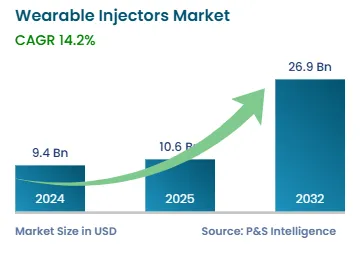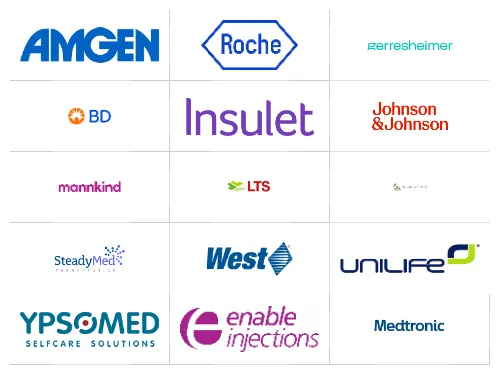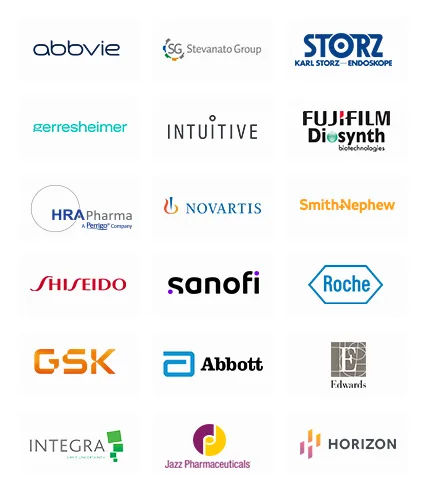Wearable Injectors Market Future Prospects
The global wearable injectors market revenue stood at USD 9.4 billion in 2024, which is set to reach USD 26.9 billion by 2032, advancing at a CAGR of 14.2% during 2025–2032. This is predominantly due to the surging concerns over health hazards due to conventional injectors, coupled with the rising demand for novel and conventional drug molecules. In addition, the increasing case count of chronic diseases, such as cardiovascular diseases, cancer, and diabetes, and favorable reimbursement policies are expected to strengthen the domain during the forecast period.
The increasing prevalence of chronic diseases can be primarily credited to changing lifestyles and a lack of access to preventive care. Additionally, to reduce healthcare costs, advanced delivery devices are gaining popularity.
For instance, infusion therapy accounts for about USD 35 billion spending in the specialty drug market. The subcutaneous injection is the most-desirable route of administration in various therapeutic areas, such as cancer, hemophilia, multiple sclerosis, and autoimmune disorders, which account for 50% of the specialty medicine expenditure in the U.S. The cost of administration of a single dose via IV infusion in a hospital or clinic is USD 1,000 to USD 10,000, while the administration of the same dose in a homecare setting costs 30% to 70% less. The usage of advanced medicine delivery devices, especially wearable injectors, at the home reduces the overall cost, as patients can infuse the medication themselves, with minimal or no training.
Moreover, since these devices are cheaper as compared to other controlled-delivery devices, they are becoming a preferred option in clinics, laboratories, and diagnostic centers.
Further, biological drugs are large molecules and more viscous in comparison to other drugs; thus, they can cause pain during injection. Pharmacokinetics and subcutaneous back pressure are the major bottlenecks associated with the use of biological molecules. This necessitates the need for slow administration of the drug, to reduce patient discomfort and increase drug performance.
For instance, immunoglobulins are required to be administered in large volumes, and therefore, subcutaneous delivery is the preferred method. Immunoglobulins are administered in a hospital or specialized clinic through syringe pumps and insertion sets. Wearable injectors have an advantage over other traditional drug delivery approaches—the fact that patients can administer the drug even when at work, and that too, at a controlled rate.
At present, four subcutaneous immunoglobulins are commercially available in the U.S., and they have tolerance flow rates ranging from 20 mL/h to 30 mL/h per site. There are many pipeline biologic drugs in the R&D phase, with most being tested for Oncology treatment, followed by infectious diseases and autoimmune disorders. Wearable injectors help reduce the overall healthcare cost associated with the administration of such drugs and improve patients’ lives, thereby driving the growth of the market.



